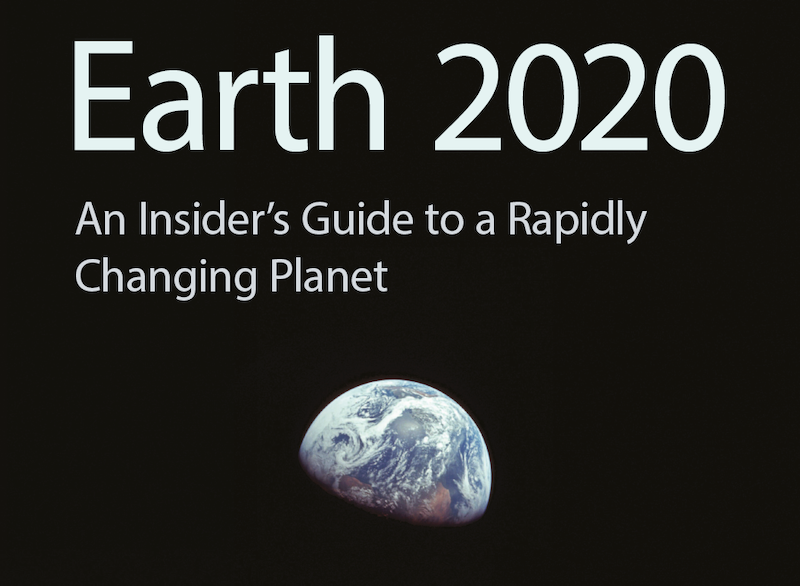Fifty years ago today, millions gathered in demonstrations, teach-ins, and community-cleanups, with words and deeds demanding a more sustainable future. The first Earth Day marked the beginning of the environmental movement, and it achieved results. The Clean Air Act and the Environmental Protection Agency were established, leading to cleaner air and water for all of us. To reflect on five decades of environmental change, a group of friends and colleagues led by Philippe Tortell (with whom I went to graduate school) wrote a series of essays, released as a book today.
The book opens up with an essay “Impatient Earth” by John Harte and Rob Socolow, a riff on the title of their 1971 classic Patient Earth. Subsequent essays cover “Carbon”, “Energy”, “Air”, “Mother Earth”, “Fresh Water”, and “Saving the Boat”, among many other topics. I contributed an essay on “Climate 1970-2020”, about how climate and our view of it have changed. All essays are available freely for online reading, download, and distribution.
Scientists provided the impetus for the policy changes and technological progress that led to the marked improvements we have seen over the past 50 years in many aspects of our environment. At Caltech, Clair Patterson determined the age of Earth using lead isotopes—and in the process discovered that toxic lead from tailpipe emissions was accumulating in the environment at an alarming rate. “The average resident of the United States is being subjected to severe chronic lead insult,” he wrote in 1965. His work set in motion the phase-out of lead as a gasoline additive. Meanwhile, his colleague Arie Haagen-Smit had unambiguously linked LA’s infamous smog to photochemical reactions of tailpipe emissions. Undeterred by relentless assaults of “Merchants of Doubt” sponsored by the automobile industry, he co-founded California’s Motor Vehicle Pollution Control Board. This later became the California Air Resources Board (CARB), with Haagen-Smit as its inaugural chair. He was also a member of President Nixon’s Task Force on Air Pollution, and in this and his role at CARB, he decisively shaped the regulations that became part of the Clean Air Act. A short while later in the 1970s, our current Caltech colleague and CliMA team member John Seinfeld developed the first model of urban air pollution, a joint model of atmospheric transport and chemistry. He used it to investigate how different emissions impact air quality in LA. The Clean Air Act now requires states to use such models in planning air-pollution regulations. Our air in LA and in many other parts of world has been clearing thanks to the pioneering work of these scientists.
Climate continues to change, much more rapidly now than in 1970, and essentially uninterrupted by the ongoing Covid pandemic. At CliMA, while we work from home, our work likewise is continuing apace. We will provide the scientific information and predictions we need to plan for and shape the next 50 years on Earth.


